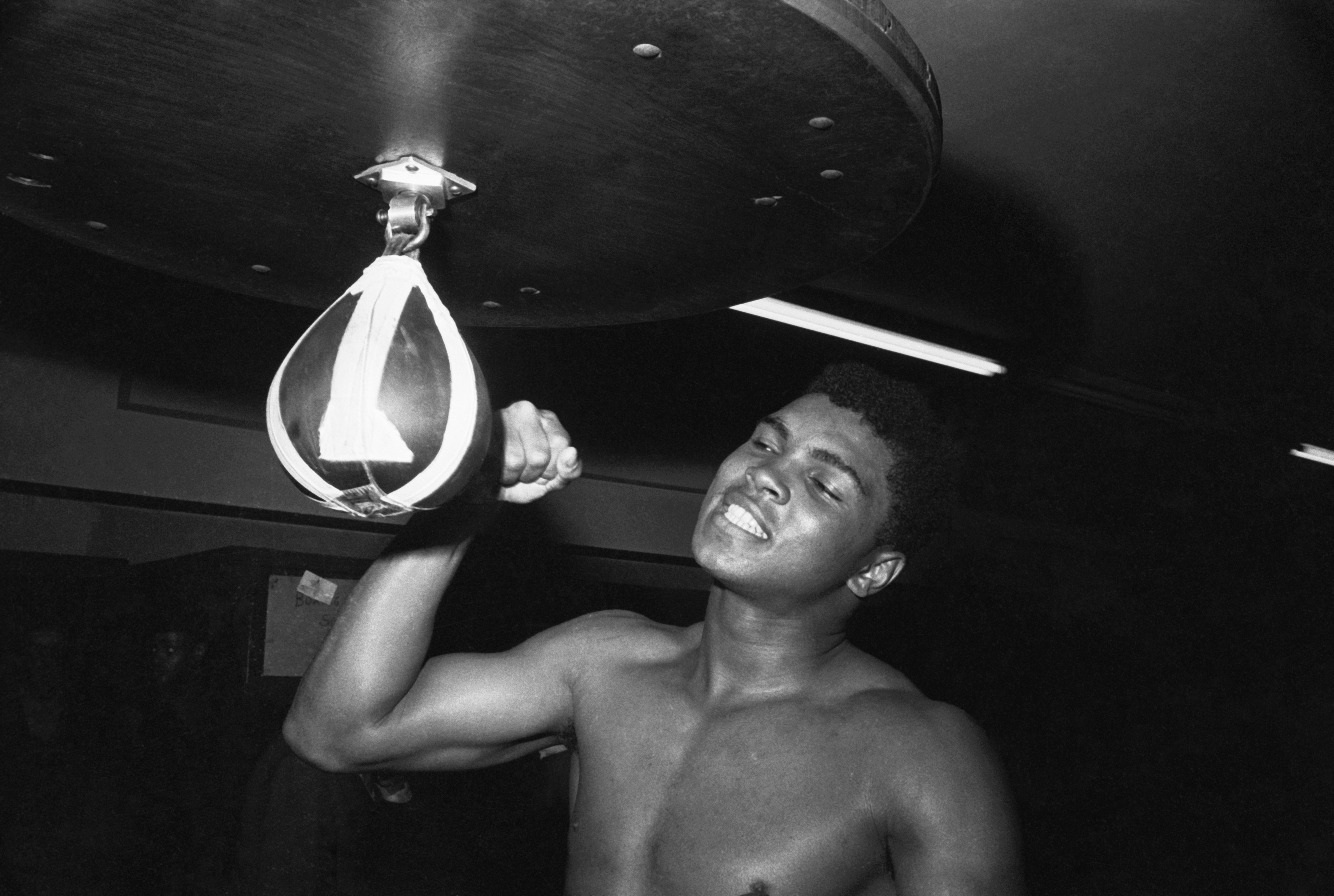Muhammad Ali’s Training Routine Included Chopping Wood and Chugging Juice
Many boxing fans consider Muhammad Ali to be the greatest boxer of all time — at least partially due to his personality and attitude. Whether he’s the best or not, you don’t enter that conversation without dedicating your life to training. Ali did exactly that, but he had a unique training routine compared to most boxers.
Ali’s training involved chopping wood among other things. And he didn’t spend as much time in the gym lifting weights as you’d expect from an all-time great.
Muhammad Ali’s boxing career

The Los Angeles Times shares a timeline of some of Ali’s career highlights, starting in 1964 when the 22-year-old — still going by his birth name Cassius Clay — upset heavyweight champ Sonny Liston. Ali also won the rematch, in controversial fashion, the following year.
After taking a few years off from the sport, Ali took part in what was dubbed the “Fight of the Century” in March 1971, suffering his first loss when he lost a unanimous decision to Joe Frazier. Ali knocked out George Foreman in 1974 in the “Rumble in the Jungle.”
Then he beat Frazier to regain his title in 1975 in the “Thrilla in Manila.” Ali lost his final bout, a 10-round decision against Trevor Berbick, in 1981.
Ali’s unusual training routine
Balance the Grind reports on Ali’s workout routine during his career, which was unusual for a boxer. In his early years, he trained at a Miami gym. He was “the first guy in the gym, and the last to leave,” according to owner Chris Dundee. But Ali didn’t utilize weight training.
Dundee admitted he believes “a fighter’s muscles can’t bulk up.” Forgoing the weights, Ali focused on his footwork by jumping rope and shadow boxing. He also did exercises to strengthen his core, including sit-ups and reverse bicycle crunches. Ali’s longtime trainer Angelo Dundee called him “the worst gym fighter in the world.”
As he got more famous and the media started following him to the gym, he built a private training compound in Deer Lake, Pa. Dubbed “Fighter’s Heaven,” Ali trained for some of his biggest fights there, according to Balance the Grind. He allowed younger fighters — like Larry Holmes and Sugar Ray Leonard — to train there as well.
A large iron bell was installed at the compound, which rang four times a day: “wake up at half past 4 o’clock in the morning, again at 8 o’clock for breakfast, then 5 o’clock in the evening for supper, and one last time signaling lights out at 10 o’clock.”
Why did Ali build Fighter’s Heaven? So he could do what he wanted without worrying about traffic:
“I got hills to run up and down, and I can run any time of the day I want because I don’t have to worry about traffic. I get me an axe and I go out and chop down some trees. In places like Miami and New York you’re not allowed to chop trees.”
Muhammad Ali on his boxing compound
Muhammad Ali’s diet
Ali ate the usual three meals a day, with dessert and snacks mixed in throughout the day. For breakfast, poached eggs, wheat toast and juice. He believed grapefruit juice help “keep the fat off his stomach” and helped him “feel good mentally.”
Lunch included fresh vegetables and lean meat; dinner usually consisted of “baked or broiled fish, chicken or turkey with a salad,” according to his former nutritionist, David Jones. Jones would get up early to make “smoothies, herbal teas and other health drinks” for Ali after his morning run.
Ali’s snacks included trail mix, nuts, or candy sweetened with honey. Ali abstained from coffee, soda, and alcohol, preferring distilled water and fruit juices. And he says he couldn’t eat foods that he liked because if he did, he would gain weight, joking “if I just look at food, my belly gets bigger.”


